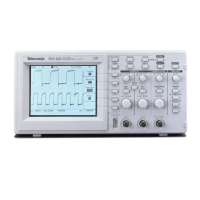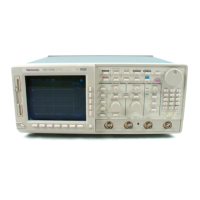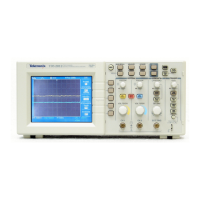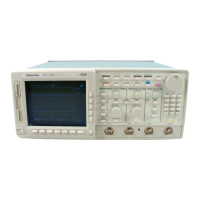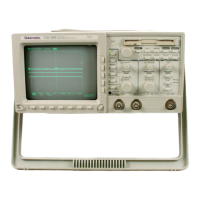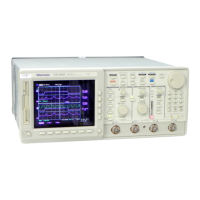TDS 420A, TDS 430A, TDS 460A & TDS 510A User Manual
3–143
Zoom
This section describes how to use zoom and how it interacts with the selected
waveform. It also describes how interpolation affects zoom.
Use Zoom when you wish to temporarily expand a waveform to inspect a small
feature(s) on that waveform.
Using With Waveforms
When zooming vertically, the digitizing oscilloscope expands or contracts the
selected waveform only. Also, the oscilloscope only positions the selected
waveform when in zoom.
When zooming horizontally, zoom expands either the selected waveform, all live
waveforms, or all live and reference waveforms depending on the setting for
Horizontal Lock in the Zoom menu.
Interpolation and Zoom
When you zoom in on a waveform on the display, you expand a portion of it.
The digitizing oscilloscope may need to show more points for that portion than it
has acquired. If it needs to do this, it interpolates. The instrument can interpolate
in either of two ways: linear or sin(x)/x.
When you zoom, the display redraws the waveforms using the interpolation
method you selected in the Display menu (linear interpolation or sin(x)/x). If you
selected sin(x)/x (the default), it may introduce some overshoot or undershoot to
the waveform edges. If that happens, change the interpolation method to linear,
following the instructions on page 3–19.
To differentiate between the real and interpolated samples, set the display style to
Intensified Samples.
Checking the Zoom Factors
To quickly determine the zoom factors of a zoomed waveform, select the
waveform and check the zoom readout. It shows the selected waveform by
number, along with the horizontal and vertical expansion factors.
The zoom readout appears at the top of the display when zoom is on. See
Figure 3–79 on page 3–145.
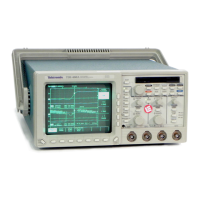
